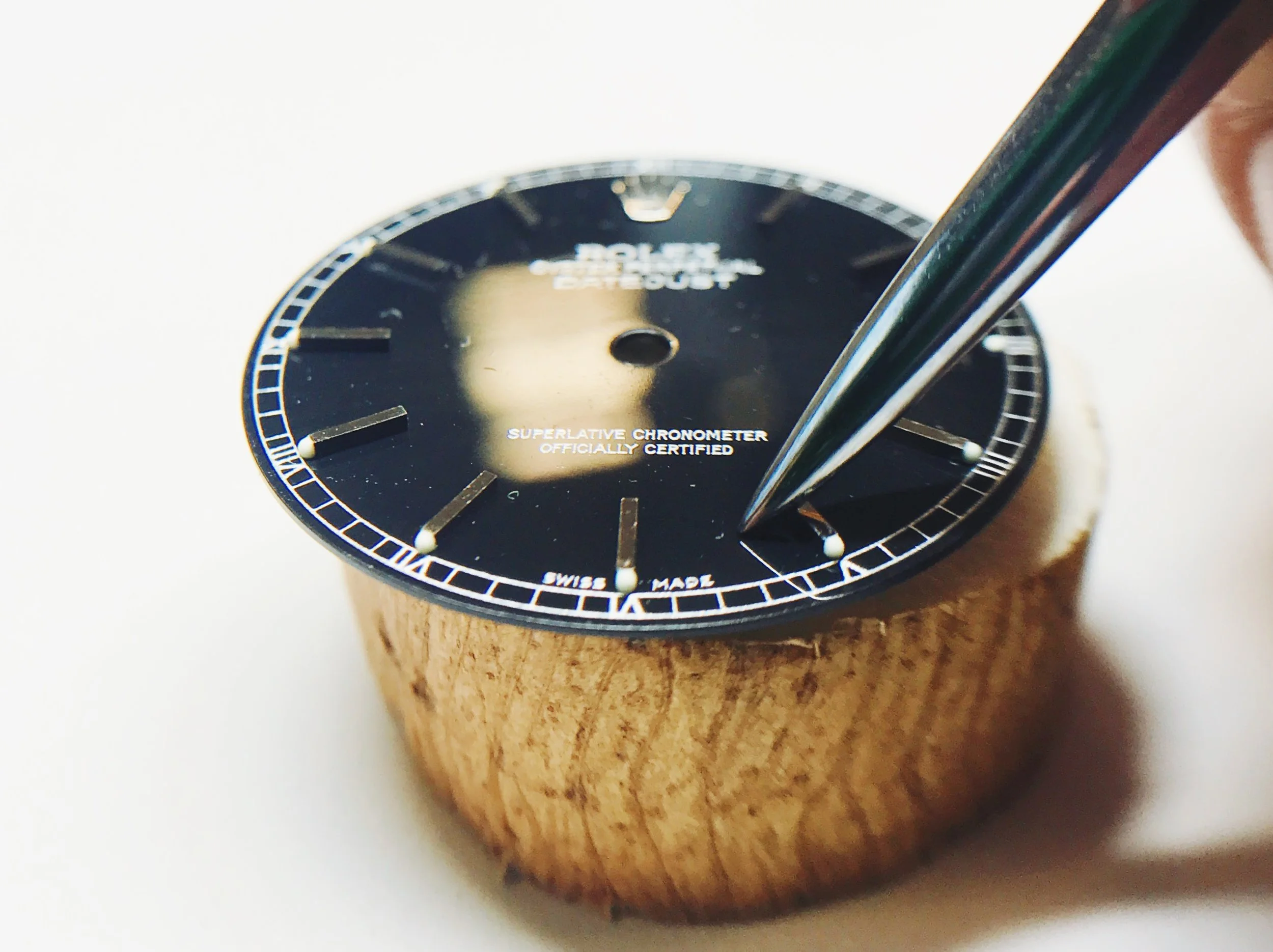Refinishing: Conservative vs. Full Repair

Refinishing is an often-overlooked part of watchmaking, but in many ways it is one of the most important skills to learn—it affects what the customer sees every day.
I love real-life refinishing jobs, because every watch is completely unique when it comes to damage and wear. Refinishing is a delicate balance between conservation and correction, and one watch I tackled recently gave me a chance to document both sides of the coin.
This vintage dive watch has been beaten on for decades, and has a huge number of battle scars to show for it. It's a lot of damage, but it's a realistic and wonderful thing to see, too. This watch has become collectible, but it's nice to know that the owner wears it every day in spite of that fact.
The case is extremely beefy, with large flat sides and factory bevels on the lugs. Those bevels are notoriously difficult to refinish, and are often ignored until they're eventually buffed away. This watch's bevels have survived destruction at the hands of a polisher, but they're just as badly scratched and dinged as the rest of the case.
In school, we're taught to be extremely conservative with our refinishing. Anything that will change the shape or geometry of a case is forbidden, and dents can remain as long as they're simple pockmarks on an otherwise nicely-refinished surface.
My first instinct, given the watch's age and condition, was to be extremely conservative. This meant a mild buffing of the flat sides, reëstablishment of the line finish on top of the lugs, and a polish on the sides and bevels of the case. There are some dings on the sides of the case, but the damage on the bevels is most pronounced. I was happy with the results, despite the remaining imperfections, because a minimum of material was removed.
Training aside, the work order for this watch was to "remove all damage." This is a tricky proposition for a watchmaker, but I gave it my best shot.
Some tools that aided my attempt were brass clock taper pins, which I used to plug the lug holes and the helium escape valve hole. The plugs allow the holes to be buffed without "smearing" their shame into the case. I also used emery (sandpaper) sticks to lap the bevels, which were smoothed with a felt wheel and polished as usual.
The second effort was significantly more involved and removed more case material, but the results were significantly crisper and cleaner.
A side-by-side comparison of the before and after stages illustrates the difference nicely. The angles of the photos are slightly different, but I promise that the shape is the same.
Proper bevel refinishing is done with a lapping machine at the very end of the service, but I only had traditional refinishing equipment at hand for this job. Lapping machines can also cause extreme damage if abused, and require the most delicate touch to use properly.
This job was far from perfect, but I hope that it illustrates the tension between conservation and correction. Refinishing is an inherently destructive act, but when used properly, it can restore a case's integrity, despite removing material.
Watchmaking student at the Lititz Watch Technicum, formerly a radio and TV newswriter in Chicago.










